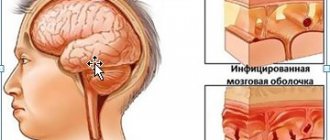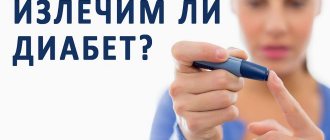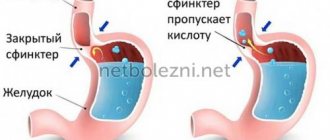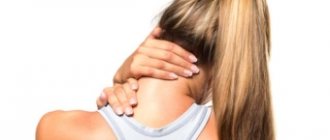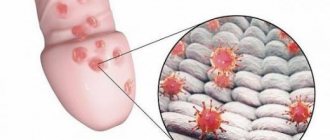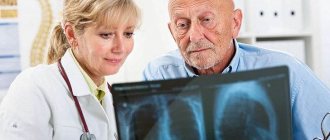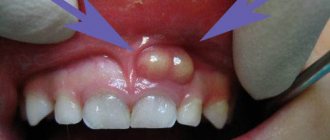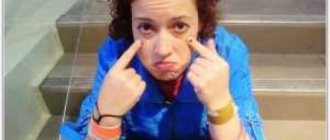Migraine is a neurological disease of a recurrent nature, manifested by headache on one side (left or right). In some cases, the pain is bilateral. Migraine treatment takes time and a comprehensive approach. It is important for people prone to migraines to give up bad habits - alcohol and smoking cause vasospasm, which leads to dangerous conditions. In case of acute pain, medications are used. Antispasmodics and analgesics help cope with pain. Pain can be relieved using traditional medicine - herbal remedies and self-massage.
What is migraine?
The fact that a person has unpleasant sensations in the head does not always indicate the presence of a pathology such as migraine. Treatment at home is actually effective for this disease. However, the first step is to make sure whether there are symptoms of migraine, or whether the person is showing signs of another disease. Compared to other pathologies accompanied by headaches, with this illness they are much more intense. Most often, unpleasant sensations occur on one side or in a certain area of the skull.
In addition, in most cases, headaches are preceded by characteristic changes in the general condition - an aura. It is still not possible to find out the exact cause of the development of the pathology. Migraines are believed to be caused by genetic predisposition. Due to the lack of reliable data on the etiology of the disease, it is impossible to eliminate the cause of the disease. However, it is possible to eliminate the main symptom that characterizes migraines. How to relieve pain, which in this pathology is so strong that it does not allow a person to concentrate on anything? There are many techniques to get rid of unpleasant sensations.
Symptoms and signs
Classic migraine, which is accompanied by an aura, differs in that throbbing pain can be felt in one half of the head or in both at the same time. In addition, this condition is characterized by the following symptoms:
- Intolerance to bright light and harsh sounds.
- Nausea and vomiting.
- State of fatigue.
- Increased sleepiness.
- General weakness.
- Visual impairment.
All of these symptoms increase over several minutes, but none last more than an hour.
Headache ruins your mood
An ordinary migraine is accompanied by the following symptoms:
- Paroxysmal headaches that are localized in one part of the head. They can last 4 hours or 3 days.
- Nausea and vomiting.
- Increased pain during exercise and even during normal walking.
- Decreased activity.
- Fear of light and sounds.
Migraine symptoms in adults and children
Before asking the doctor the question: “How to treat migraine?” - You need to know about its symptoms. The disease can occur in several forms. “Classic” and “simple” migraines are most often observed. In the first case, the pain syndrome is preceded by a specific condition - an aura. The classic form of migraine occurs in a third of patients. An aura is a condition that occurs 20-30 minutes before an attack. It is characterized by changes in vision (loss of visual fields, temporary blindness), loss of sensitivity, flickering in the eyes. The simple form of migraine has the same clinical picture as the classic one, but there is no aura. Symptoms of the disease include:
- Intolerance to loud sounds and bright lights.
- Severe pain on one side of the head, less often in the back of the head, forehead, temples. For some people, discomfort spreads over the entire surface of the skull. The pain is throbbing and acute.
- Nausea not associated with eating. Vomiting is less common.
- Loss of strength, drowsiness.
- General weakness.
If these symptoms appear at intervals of 3-4 times a month, migraine should be suspected. A specialist in this field - a neurologist - will tell you how to relieve pain. For treatment, both traditional methods and medications are used.
Non-steroidal anti-inflammatory drugs
Well-known and proven medications. Used in a wide group of cases. Basically, they are aimed at relieving pain of an infectious-inflammatory, autoimmune nature, discomfort in pathologies of the musculoskeletal system. They act indirectly.
If we talk about specific indications:
- Osteochondrosis. Inflammatory process of the spine. Unbearable headaches are characteristic of lesions in the collar area.
- Migraine processes, which are also caused by dysfunction of the musculoskeletal system. There are special forms of the pathological condition. They are just corrected through NSAIDs.
- Intervertebral hernia. Complication of osteochondrosis. Destruction of the disc, loss of its shock-absorbing properties. The result is compression of nerves and blood vessels, severe local inflammation. NSAIDs do not always cope in this case.
- Infectious diseases. Some anti-inflammatory drugs, for example, their ibuprofen group, also have an antipyretic effect, which is very valuable for colds, flu and ARVI.
- Autoimmune lesions of the cervical region and spine.
The task of anti-inflammatory non-steroidal origin follows from the name of the group of drugs. At the same time, they are not able to relieve severe neurological pain or discomfort in disorders of vascular origin.
As for famous names, here are some options:
Ketoprofen
A product with the widest possible spectrum of pharmacological activity. It is prescribed both for classic diseases of the musculoskeletal system and for disorders including oncology.
Of course, as a maintenance drug, since it cannot cope with such severe pain syndromes alone.
It is used as a complex medicine for colds and acute respiratory viral infections of various origins. Ketoprofen is a fast-acting NSAID, relieves pain in a matter of minutes, has a minimum of side effects, but is very demanding on compliance with the dosage regimen.
Ketorolac
It is considered a more powerful pain reliever. Has the ability to correct severe and moderate discomfort. It is also prescribed in the postoperative period.
Ketorolac, like tablets for the head, is used for inflammatory, degenerative discomfort, vascular spasms, and is prescribed as an aid in the treatment of migraine conditions.
However, power comes at a price. The product can be taken for no more than 3-5 days, but the risk of bleeding, liver and kidney damage remains. You cannot take Ketorolac without permission.
Diclofenac
A more specific remedy. Prescribed for disorders of the musculoskeletal system. It relieves arthralgia and joint symptoms well (including at the level of the cervical spine).
There is information about the negative effect of Diclofenac on the cardiovascular system. Especially with regular use. It makes sense to limit its consumption even for direct indications.
Nimesulide
As in the case of the previous one, it is prescribed mainly for the correction of headaches due to lesions of the back, spine and related anatomical structures.
Unlike Diclofenac, it is many times safer. Suitable for relatively long-term use (up to a week or a little more).
Without medical supervision, it causes disruption of the functioning of internal organs.
Nurofen
A strong, but well tolerated drug from the ibuprofen group. Nurofen is inexpensive, effective both against headaches in its pure form and for correcting the symptoms of the underlying pathological process: be it fever or local inflammation.
Available in several forms:
- The classic one works in 15-20 minutes.
- Express is better absorbed, so you can expect results almost immediately.
- Forte offers a double dosage of the active substance per tablet.
There are a lot of variations.
NSAIDs have several important benefits:
- Low cost. The products are available at any pharmacy. The cheapest is sold at a price of 60-70 rubles per pack.
- Sale without prescription.
- High speed of action. After approximately 10-20 minutes, you can expect a beneficial effect.
At the same time, if prescribed correctly, the discomfort disappears completely or mostly.
But there are also serious disadvantages:
- Lots of contraindications.
- Short terms of possible use. Even the most gentle remedies should not be taken for more than a week.
- Lots of side effects. The vessels and mucous membrane of the stomach and digestive tract are almost always affected.
For emergency correction of headaches of unknown origin, preference should be given to Nurofen and other ibuprofen-based drugs. They are the safest and have the widest spectrum of action.
The mechanism of pain development in migraine
The question of how to get rid of migraines plagues everyone who has encountered this disease. After all, the main symptom of the pathology is an unbearable headache. The mechanism of its occurrence is not fully understood. It is known that pain is not associated with damage to the brain structure. With migraine, it is considered a functional disorder. Most often, attacks are preceded by nervous overstrain, physical activity, menstruation, taking hormonal drugs and alcohol, and changes in weather conditions. As a result of any impact, the trigeminal nerve is activated. In addition, metabolic disorders associated with the hormone serotonin occur.
Necessary examinations for headaches
It is important to understand where the cause of the disorder is. Forecasts depend on this. You need to see a therapist, he will refer you to a specialized specialist. Among the diagnostic methods:
- Patient interview. Identification of symptoms of the pathological process.
- Anamnesis collection.
- X-ray of the skull.
- Ultrasound of cerebral vessels. In different modes. Often it is disturbances in cerebral blood flow that cause discomfort.
- Blood pressure measurement.
- Daily monitoring. About the same thing, only for 24 hours.
- ECG, ECHO. As part of assessing the condition of the heart and large local vessels.
- MRI of cerebral structures, back.
- X-ray of the spine.
- Encephalography.
- General blood test, biochemistry. Also hormone tests if there is any suspicion.
This list in different combinations is prescribed to patients with an unclear genesis of headache. Next, it’s up to the doctor on site.
Tablets for cephalalgia are not a panacea, but a temporary symptomatic measure. You need to work with the root cause (they are described here).
Migraine Treatment Methods
How to get rid of migraines forever? Unfortunately, it is rarely possible to completely cure the disease, this is due to the fact that the reasons for its development are unknown. Despite this, it is possible not only to reduce the intensity of the pain syndrome, but also to reduce the frequency of attacks. For this purpose, various treatment methods have been developed. Among them, the most commonly used therapeutic procedures are:
- Pain relief with non-narcotic analgesics.
- Acupressure for migraines.
- Traditional methods of treatment: the use of various infusions and decoctions.
- Soothing baths to reduce pain intensity.
- Triptans for migraines are drugs that affect metabolic processes in the brain. They have the effect of serotonin, the functioning of which is disrupted in the presence of this pathology.
- Impact of magnetic installations created to relieve migraine pain.
All these treatment methods are used either individually or in combination. The effectiveness of a particular method is determined by the patient. In this case, the individual characteristics of the body and the nature of the disease play an important role.
The main causes of pain in the head area
- Vascular spasm
- Migraine
- Arterial hypertension (including hypertensive crisis).
- Increased intracranial pressure
- Increased intraocular pressure
- Irritation of the meninges (most often with meningitis).
- Vascular accidents (hemorrhagic or ischemic stroke).
- Diseases or irritation of the cranial nerves (most often neuritis and neuralgia of the facial nerve or trigeminal neuralgia).
- Tumor processes, parasitic diseases in the brain, its membranes or skull.
A therapist together with an ophthalmologist or a neurologist can understand the causes of pain. There is also a specialist who deals exclusively with the problems of headaches - a cephalgologist.
The effectiveness of massage for migraines
What to do with a migraine if there are no medications nearby? In some cases, patients do not want to take pain medications because they develop side effects or allergic reactions. In such situations, other treatment methods can be used. One of the effective ways to relieve pain is migraine massage.
It is known that there are points on the surface of the head, the impact of which reduces the sensitivity of the receptors. In most cases they are located symmetrically. Head massage is performed using pressing and circular movements. The impact on one point should last about a minute. It is advisable to have the massage done by a specialist in this field. After all, incorrect actions can not only be ineffective, but also cause harm to the patient. In addition to acupressure of the head, another physical method of pain relief is used - mechanical impact on the area of the hands and feet. The massage points are located between the index finger and thumb.
Keep a diary
It will help determine what is causing the migraine. Pay attention to when it starts, what you were doing at the time, how long they last, and what, if anything, brings relief. Until recently, the best advice was to avoid triggers. But new research suggests it may increase sensitivity to potential triggers. A more helpful approach may be to learn to cope with these headache triggers through behavioral management techniques, such as identifying and eliminating negative thoughts, learning to relax, and reducing stress.
Migraine: how to relieve pain at home
Massage is one of the ways to relieve pain at home. In addition, there are other methods. Among them are medicinal baths, taking infusions and decoctions, and applying magnetic devices to the head. None of this can completely eliminate migraines. Treatment at home is aimed only at relieving pain. An effective method is the constant use of soothing infusions and decoctions. They reduce the intensity of pain and also help prevent the development of an attack.
What folk medicine to choose for migraine? First of all, it depends on the human body. Therefore, it is worth trying different methods to relieve pain. In addition, it is necessary to normalize the daily routine, diet, and eliminate harmful factors such as alcohol and smoking. To reduce nervous tension to a minimum, it is recommended to take the sedative drug “Persen”, tincture of motherwort or valerian. It is also necessary to promptly treat inflammatory diseases of internal organs, as they can provoke migraine attacks and affect the emotional state.
Folk methods include: applying cabbage and lilac leaves to the head, ingesting a decoction of clover, hawthorn, shepherd's purse, and potato juice. An infusion of Siberian elderberry flowers is considered effective. In addition to herbal decoctions, green tea, currant and viburnum juice relieve pain.
How to get rid of migraines without medications? If there are contraindications to taking medications or the patient cannot afford them, then the patient can try the following methods:
- Normalize your daily routine. Spend more time outdoors, relax, sleep at least 7-8 hours a day. Eliminate stressful situations, if possible, do not enter into conflicts, change jobs (if the field of activity provokes migraine attacks).
- Drink calming infusions when stressed, periodically replace coffee and tea with herbal infusions and juice.
- Take a contrast shower.
- For pain, massage the collar area, head, hands and feet.
Application of the most common tablets
The listed medications should be used as follows:
- Aspirin. For pain - 0.5-1 g per day orally (no more than 3 g per day). It is recommended to divide the daily dose into three doses. The duration of treatment is no more than 14 days. Effervescent tablets are dissolved in 0.1-0.2 liters of boiled water. Take 0.25-1 g three times a day after meals. During treatment, it is advisable to avoid drinking drinks containing alcohol.
- Analgin. Take 0.25-0.5 g twice or thrice a day after meals. The maximum permissible daily dose is 3 g, a single dose is 1 g. Children are prescribed 5-10 mg per kilogram of weight three to four times a day.
- Paracetamol. Take 0.35-0.5 g three or four times a day after meals, with a sufficient amount of water. The highest single dose is 1.5 g, the daily dose is 3-4 g. For children aged 9-12 years, the maximum daily dose is 2 g. For children from 3 to 6 years old, the maximum permissible daily dose is 1-2 g in several (3- 4) doses at the rate of 60 mg per 1 kg of weight.
- Tempalgin. The medicine is taken after/during meals. In most cases, a single dose is equal to one tablet of the drug. The maximum daily dose is 3 tablets per day.
- Citramon. Take one tablet twice or thrice a day. As a rule, one dose is enough to relieve headaches. It is not recommended to take it shortly before surgery, because the drug reduces blood clotting.
- Pentalgin. Take 1 to 3 times a day, 1 tablet. The maximum permissible daily dose is 4 tablets. As an anesthetic drug, it is used for no more than 5 days, as an antipyretic - no more than 3. Longer treatment is possible only with the permission of the attending physician. During the period of treatment you need to stop drinking alcohol.
- Solpadeine. Children over 16 years of age and adults take 1-2 tablets three or four times a day. The interval between two doses should be at least 4 hours. The maximum dose per day is 8 tablets, single dose is 2 tablets. Children 12-16 years old are recommended to take 1 tablet three to four times a day. The highest doses, compared to adults, are halved: the daily dose is 4 tablets, the single dose is 1 tablet. It is recommended to take the product after meals. Before taking, the tablet is dissolved in ½ glass of water.
A headache attack is easy to relieve. Usually, taking one painkiller tablet is enough. Systematic pain is a cause for concern. If they are detected, you must consult a doctor to make a diagnosis and choose the optimal course of treatment.
Many people, when experiencing a headache, are accustomed to taking inexpensive painkillers, for example, Analgin. Analgin for headaches - an effective drug or an outdated remedy? Let's try to figure it out.
Read about the methods of use and possible contraindications of the drug No spa for headaches in this topic.
Should you use medicinal baths for migraines?
Another cure for migraines is special soothing baths. It is worth remembering that they are not allowed for everyone. For example, they are contraindicated for pregnant women, people suffering from certain skin pathologies and severe cardiovascular diseases. If this method is approved by the attending physician, then it must be tried. Local mustard baths for hands and feet are recommended (considered more effective), and it is practiced to add sea salt and various essential oils to the water.
Migraine during pregnancy
Women who suffer from this disease even before conceiving a child are not immune from recurrence of migraine attacks during pregnancy. Even worse, while expecting a baby, migraines may become more frequent, and the specific risks during pregnancy may make it difficult to deal with pain using conventional methods.
If during pregnancy the expectant mother also notices surges in blood pressure due to migraines, it is imperative to consult a doctor, as this may be a sign of gestosis.
If the headache is not accompanied by any other sensations, you can take a paracetamol tablet, relax and lie down. It is worth considering that drugs that could be taken before conceiving a child can harm the baby during pregnancy due to the presence of dihydroergotamines in the composition.
For recurrent headache attacks, you should definitely consult a doctor, who will prescribe effective and safe treatment.
Drug therapy for migraine
It is worth remembering that there is no etiological treatment for this disease. Effective tablets for migraines are painkillers, vasoconstrictors, and sedatives. Beta blockers and antidepressants are used as preventative agents. To stop an attack, medications such as Paracetamol, Aspirin, Solpadeine, etc. are prescribed.
Migraine prevention
People who are forced to experience all the delights of this disease must more carefully monitor their lifestyle in order to avoid a relapse of the attack. Preventive measures for migraines should become a way of life, because a recurrence of the disease can happen even after a few days and can be triggered by many factors.
Prevention of migraine attacks is as follows:
- Exclusions from the daily diet of food and aromatic additives, fatty and unhealthy foods, some types of spices (cardamom, nutmeg, cinnamon).
- Reducing the amount of sweets and smoked foods in the diet.
- Eliminating bad habits, giving up caffeine-containing drinks (in addition to coffee, green tea, cappuccino, etc.).
- Avoiding stressful situations, feelings of fear, sudden climate changes, eliminating the possibility of psychological discomfort.
- Sleep at least 7-8 and no more than 10 hours a day.
- Moderate working hours to eliminate the possibility of mental and physical fatigue.
- Drinking your daily water intake.
The occurrence of migraine can also be prevented by taking appropriate actions at the emerging stage of the disease, called “aura”. At the first symptoms of an aura (nausea, blurred eyes, a feeling of pressure on the head), retire to a dim, cool room, lie down and relax.
Triptans for migraines: drugs for pain relief
In recent years, a new group of drugs – triptans – has been used to treat migraine. They have the following actions:
- Participate in the formation of anti-inflammatory biological substances.
- Reduces the sensitivity of pain receptors of the trigeminal nerve.
- They constrict blood vessels, which are significantly dilated during migraines.
This group of drugs includes the medications “Rapimig”, “Sumatriptan”, “Rizatriptan”, and the nasal spray “Zomig”. The tablets are taken only as prescribed by a neurologist, at the beginning of an attack.
Treatment with medications
Headache pills act differently, and therefore should only be used in consultation with a doctor. Analgesics and antispasmodics are considered universal remedies. They are symptomatic remedies and do not so much treat the disease as alleviate the human condition.
Analgesics
Available drugs are analgin and aspirin . They are sold without a doctor's prescription and bring quick relief, although they have many contraindications. They are considered as an emergency aid for acute pain. The maximum dosage is 2 tablets at a time. The drug Tempalgin with metamizole sodium works similarly. It relieves pain and is characterized by a mild antipyretic effect.
The list of effective analgesics includes:
| A drug | Description |
| Citramon | Contains paracetamol and aspirin. It is ineffective for migraine pain, but it allows you to stop the first signs of an attack. Askofen works similarly. |
| Ketanov | A powerful analgesic that helps relieve even severe pain. Ketanov should be taken in cases where other means are ineffective. The drug is not used in pediatrics and is contraindicated during pregnancy. |
| Ibuprofen | Refers to complex non-narcotic anti-inflammatory drugs. Relieves headaches and chills, reduces temperature. Used once or as a short-term course. It is an analogue of the drug Nurofen. |
Analgesics in their pure form are rarely used . In this sense, analgin tablets are a universal remedy. Other drugs have a rich composition and combined effect. They not only have analgesic properties, but also relieve spasms, regulate body temperature, and soothe.
Antispasmodics
Antispasmodics are divided into neurotropic and myotropic. The first dilate blood vessels. The latter prevent the contraction of smooth muscles.
- Myotropic antispasmodics include drugs based on drotaverine. They are produced under different names: No-shpa, Spazoverin, Drotaverin. This group also includes drugs with papaverine: Papazole and Papaverine. Preparations containing trimebutine are less commonly used: Trimedat and Neobutin.
- The group of neurotropic antispasmodics includes Platiphylline and Scopolamine. They relieve spasms of smooth muscles, regulate heart rate, and activate the brain.
- Natural antispasmodics are characterized by a mild effect. These are herbal preparations. Such products as Prospan, Azulan, Altalex have proven themselves well. They are used as part of complex therapy for chronic migraine.
Doctors have different opinions regarding the effectiveness of antispasmodics for migraines. Neurologists note that there is no direct relationship between vascular spasms and headaches, but migraines are more common with cervical osteochondrosis and VSD, which cause spasms.
Combination drugs
Mixed-action drugs are in demand. Usually these are non-narcotic antispasmodics with analgesic properties:
| Name of medicine | Description |
| Pentalgin | Belongs to the group of antispasmodic analgesics. It is characterized by analgesic, anti-inflammatory and antipyretic properties. Contains caffeine, which causes dilation of blood vessels and improves brain activity, |
| Excedrin | Combined analgesic with caffeine, paracetamol and aspirin. It is characterized by antipyretic, anti-inflammatory and analgesic effects. Improves blood microcirculation, increases the activity of the respiratory and vasomotor centers. |
| Migrenol | Provides a psychostimulating effect. Increases physical performance, blocks pain impulses in the central nervous system. |
| Revalgin | Helps with headaches of various types. Eliminates pain, relieves spasms, and has an anti-inflammatory effect. |
| Unispaz | Contains drotaverine and codeine, the main substance is paracetamol. Helps with spastic pain, but is ineffective for persistent migraine. Single dosage – 1-2 tablets. Repeated use is possible after 8 hours. In case of overdose, it causes dizziness, nausea, and drowsiness. |
Triptans
Triptans refer to drugs based on serotonin. They are aimed at relieving migraine attacks. Effectively combat headaches accompanied by an accompanying set of symptoms - an aura:
| Name | Description |
| Sumatriptan | Has vasoconstrictor properties. Causes a narrowing of the carotid arteries, which supply blood to the meninges. It does not have an analgesic effect, but eliminates the cause of migraine. Relief occurs 30 minutes after administration. Take 100 mg of the drug once in case of an attack. The maximum daily dosage is 300 mg. In case of overdose, nausea and vomiting, a short-term increase in blood pressure, and tachycardia are possible. |
| Relpax | A drug based on eletriptan. A powerful anti-migraine agent. Relieves migraine attacks with and without aura. Suitable for treating patients aged 18-65 years. You can take the drug again after 2 hours have passed after taking the first dose of 40 mg. |
| Rapidmed | Analogue of Sumatriptan. The drug is taken for acute pain in a dosage appropriate to age and clinical manifestations. Another drug based on sumatriptan is Imigran spray. |
Antidepressants and sedatives
Independent use of sedatives for migraines does not make sense. During the period of remission, it is useful to drink tea from medicinal herbs: mint, lemon balm, chamomile, motherwort, valerian root.
- Topamax belongs to the group of anticonvulsants with a sedative effect. This remedy helps with epilepsy and is used to prevent migraines in adults. During an acute attack, the drug is ineffective. Tablets are taken at 100 mg per day, divided into two doses.
- If you are prone to depression, medications such as Amitriptyline, Azafen, Stablon will help. These are potent drugs that are used as prescribed by a doctor. For minor headaches, you can take a drug of natural origin: Novopassit, Afobazol, Persen.
- In addition to pills, aromatherapy will help. Traditionally, lavender, mint, and lemon oils are used. Strong odors affect the olfactory receptors, help relieve pain and relax.
Magnetic devices against migraines
How to treat migraine with magnetic pulses? This method of treatment was recently discovered. Typically used for “classic” migraine (with aura). Scientists have proven that the effect of magnetic pulses on the occipital region of the head eliminates one of the mechanisms for the development of pathology - depression of the cerebral cortex.
Externally, the device resembles a hair dryer and is considered safe for the body. The effect is achieved by using the device during the onset of the aura.
How to get rid of headaches without pills
- Eye massage is a way to reduce intraocular pressure and stimulate cerebral blood flow. The technique is especially effective for those who work for a long time at the monitor, with documents, reading or watching TV. Using the pads of the index fingers of both hands, find a painful hole in the lower part of the orbit (the exit point of the suborbital nerve). Using rocking circular movements, massage the point for four counts in one direction and the other.
- A similar point is felt on the upper edge of the orbit and also massaged.
- Perform a massage on a point in the middle of the upper cheekbone.
- Lightly rocking movements of the fingertips massage the upper eyelids with the eyes closed.
- With open palms, massage the occipital protuberances clockwise and counterclockwise in a circular motion.
- With your eyes closed, massage your face with your palms.
Cervical migraine: symptoms
One type of disease is cervical migraine, characterized by headaches caused by impaired blood flow through the vertebral artery.
Symptoms of cervical migraine:
- severe headaches, localized mainly in the back of the head and over time expanding to the temples, forehead, eyes
- any movement of the head makes the pain worse
- vision is impaired, spots appear before the eyes
- Coordination of movements is impaired, tinnitus appears, temporary deafness, nausea
- difficulty swallowing, sensation of a “lump” in the throat or the presence of a foreign body
Unlike other diseases with similar symptoms, cervical migraine is characterized by pain when pressing on the area of the vertebral artery in the neck. This provokes an increase in the intensity of painful sensations.


